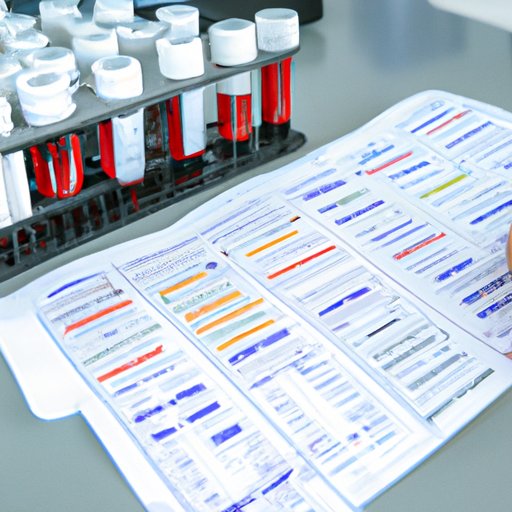Introduction
A blood culture is a laboratory test used to detect and identify microorganisms that cause infections. It is typically ordered by a doctor when they suspect an infection in the body, as it can help them diagnose the type of infection and guide treatment decisions. In this article, we’ll explore the basics of blood cultures and explain what they test for, the purpose behind them, and the benefits and risks associated with them.
Exploring the Basics: What Do Blood Cultures Test For?
Blood cultures are used to detect the presence of bacteria, fungi, or other microorganisms in the bloodstream. They can also be used to detect the presence of viruses, but this is less common. There are two main types of blood cultures: aerobic and anaerobic. Aerobic cultures are used to detect organisms that require oxygen to grow, while anaerobic cultures are used to detect organisms that do not need oxygen to grow.
The most common microorganisms detected by blood cultures include bacteria such as Streptococcus, Staphylococcus, and E. coli; fungi such as Candida; and parasites such as Plasmodium.

A Closer Look at What Blood Cultures Tell Us About Our Health
Blood cultures are important diagnostic tools because they can provide valuable information about an individual’s health. They can help diagnose a variety of infectious diseases, such as sepsis, meningitis, and endocarditis. By detecting the presence of specific microorganisms, they can also help identify the pathogen causing the infection.
According to a study published in the journal Clinical Microbiology Reviews, “Blood cultures remain one of the most useful clinical tests for diagnosis of bacterial and fungal infections.”
Unpacking the Purpose of Blood Cultures and How They Work
Blood culture tests involve collecting a sample of the patient’s blood and testing it in a laboratory. A healthcare provider will use a needle to draw a sample from a vein in the arm or hand, which is then sent to a lab for testing. The sample is placed in a container with a special growth medium designed to promote the growth of any microorganisms present in the sample.
Once the sample has been collected, it is incubated in the laboratory for several days. During this time, any microorganisms present in the sample will be able to grow. After the incubation period, the sample is examined under a microscope to determine if any microorganisms are present.
What Are the Benefits and Risks of Blood Culture Testing?
The primary benefit of blood culture testing is that it can provide valuable information about an individual’s health and help doctors diagnose and treat infectious diseases. Additionally, blood cultures are relatively inexpensive and easy to perform. They are also relatively safe, as the risk of infection from the needle prick is low.
On the other hand, there are some potential risks associated with blood culture testing. These include discomfort and/or pain from the needle prick, risk of infection from the needle prick, and risk of an incorrect or false-positive result.

Understanding the Significance of Positive and Negative Blood Culture Results
Positive blood culture results indicate the presence of microorganisms in the sample, while negative results mean no microorganisms were detected. It’s important to note that a positive result doesn’t necessarily mean the patient has an infection – only that microorganisms were detected in the sample.
In order to interpret the results correctly, it’s important to understand the type of microorganism present and its sensitivity to certain medications. This information can then be used to guide treatment decisions. For example, if the microorganism is sensitive to a certain antibiotic, the doctor may prescribe that medication to treat the infection.
Conclusion
Blood culture tests are important diagnostic tools that can help doctors diagnose and treat infectious diseases. They involve collecting a sample of the patient’s blood and testing it in a laboratory to detect the presence of microorganisms. While there are some potential risks associated with the test, overall it is relatively safe and provides valuable information about an individual’s health.
Understanding the significance of positive and negative blood culture results is essential in order to interpret the results correctly and make informed treatment decisions. With this knowledge, patients and their healthcare providers can work together to ensure the best possible outcome.
(Note: Is this article not meeting your expectations? Do you have knowledge or insights to share? Unlock new opportunities and expand your reach by joining our authors team. Click Registration to join us and share your expertise with our readers.)
